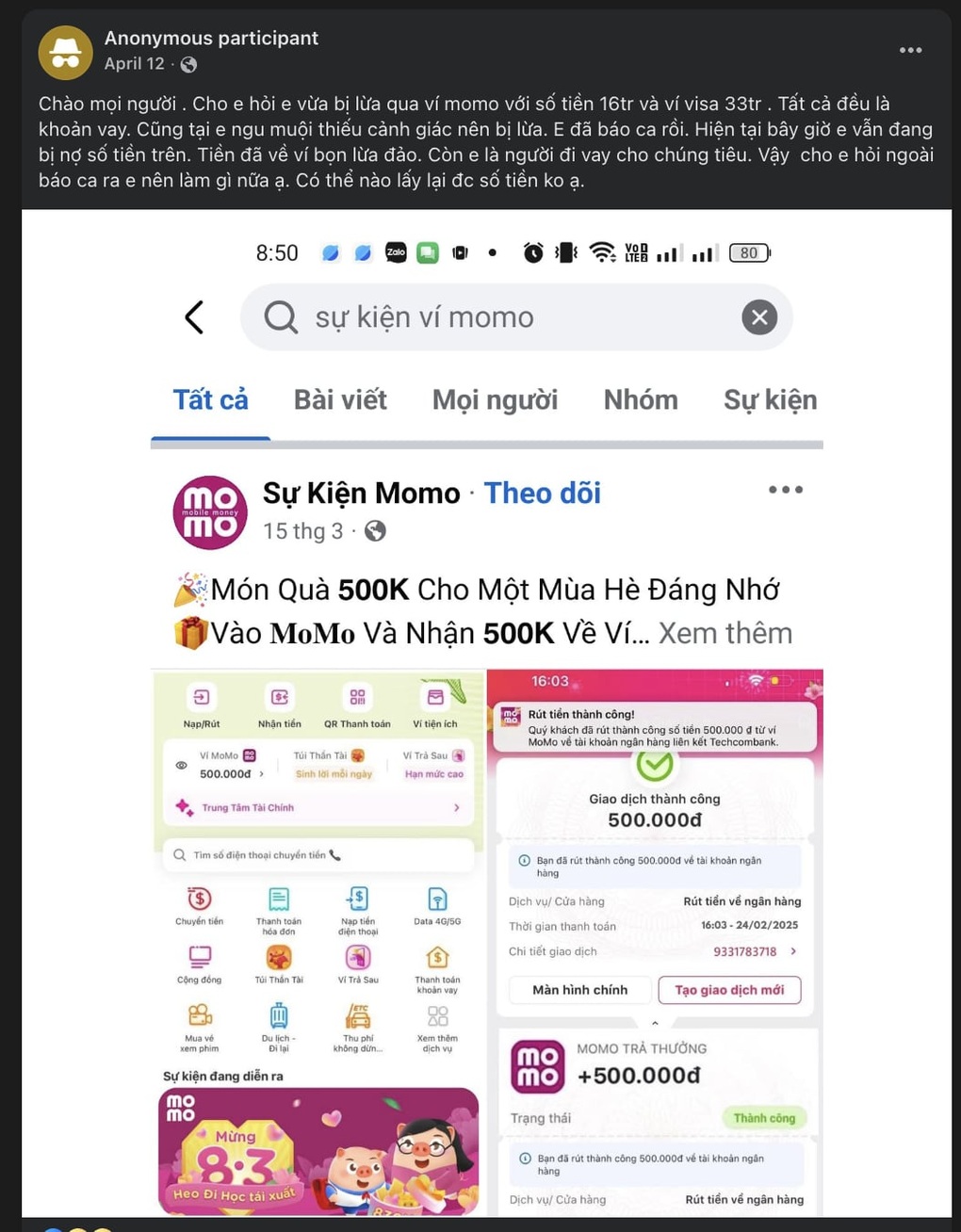“Winning” iPhone with increasingly new tricks
According to the reporter's research, recently many users have shared on social networks similar scenarios of winning messages, "gratitude" programs, requests to follow instructions or provide OTP, all of which are carefully staged with interfaces impersonating reputable brands such as e-wallets, banks, and e-commerce platforms.
Ms. Q. (HCMC) received a text message informing her that she won a phone from MoMo. The text message had a logo, a "receive gift" link, and even a confirmation call from someone claiming to be a MoMo employee.
“That person said if I didn’t follow the instructions, the gift would be canceled, and I was very confused. However, after calling the MoMo hotline to verify, I found out that there was no such gratitude program. That was when I was startled because I was almost psychologically manipulated into following the scammer’s instructions,” Ms. Q shared.

Cases of impersonating MoMo scams shared by users on social networks (Screenshot).
Responding to reporters, a representative of MoMo confirmed that they are not currently organizing any gift giving or winning programs outside of the MoMo application.
“We absolutely never ask users to provide OTP, password or transfer money to strange accounts or scan QR codes to receive rewards. All promotions and gifts, if any, are transparently announced right in the application,” said the representative.
Widespread warning, why are there still people falling into the trap?
The trick of impersonating financial brands to commit fraud is not new, but it continues to appear in more sophisticated forms. Victims only need to click on a link containing malicious code or provide OTP, money can be withdrawn from wallet or bank account in just a few minutes.
Not stopping at “winning” messages, many subjects also impersonate police and prosecutors to threaten victims, asking them to transfer money to “verify finances”. Some people lost tens of millions of dong just because of a phone call that seemed to come from the authorities.
According to cybersecurity experts, the reason is because current scams are mainly based on "social engineering" techniques that attack psychology and behavior, without the need for high technology.
Fraudsters only need a reputable brand name, a promise of attractive rewards, or a timely threat to easily make users lose their guard. The scenarios are not new, but they are staged more and more realistically, from the call center voice, intonation, to even fake documents.
Principles of creating a safe "shield"
One of the simple but very effective ways to prevent fraud is to get into the habit of actively monitoring warnings from financial applications, banks and e-commerce platforms.
These are all units that regularly update fraud warnings, risk identification and situation handling instructions right in the application, website or official fanpage.
Users need to remember three basic principles to create a safe “shield”.
First, slow down and ask questions instead of rushing in with a sense of urgency. Next, always verify information at the source by looking up the phone number, calling the hotline, or accessing the official channel.
And most importantly, if in doubt, stop communicating with the scammer, absolutely do not send money, do not scan QR codes, do not share OTP or sensitive data when unsure.
Users do not need to understand technology, just take a few seconds to verify information or contact the hotline when they see something unusual. These small actions are effective "blocks", helping to protect accounts from increasingly sophisticated and difficult-to-detect scams.
Source: https://dantri.com.vn/cong-nghe/no-ro-chieu-tro-lua-dao-qua-tri-an-khach-hang-20250926221018914.htm



![[Photo] Soldiers guard the fire and protect the forest](https://vphoto.vietnam.vn/thumb/1200x675/vietnam/resource/IMAGE/2025/9/27/7cab6a2afcf543558a98f4d87e9aaf95)

![[Photo] Prime Minister Pham Minh Chinh attends the 1st Hai Phong City Party Congress](https://vphoto.vietnam.vn/thumb/1200x675/vietnam/resource/IMAGE/2025/9/27/676f179ddf8c4b4c84b4cfc8f28a9550)

























































































Comment (0)